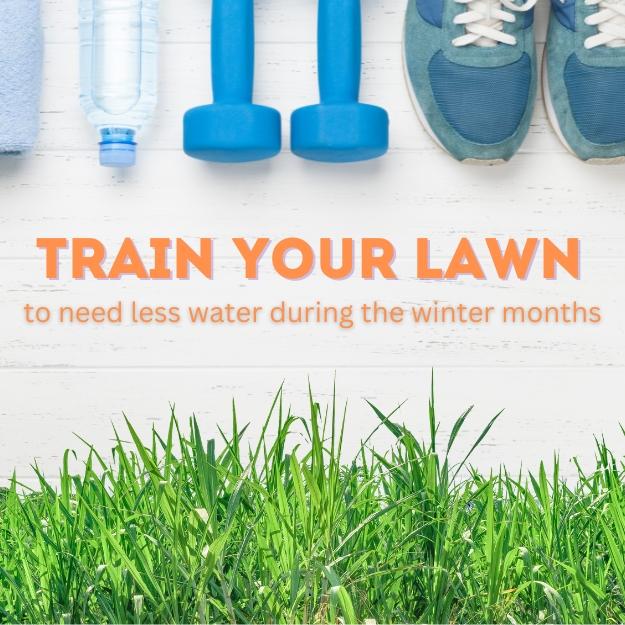
Just like a great workout strengthens your body, your lawn can benefit from a little training to become healthier and more resilient. This winter, help your lawn build its “water muscles” by skipping a week between irrigation sessions. Cooler temperatures mean your grass naturally requires less water and this seasonal adjustment can save you time, money and resources.
Why Should You Train Your Lawn?
When you reduce watering during the winter months, you’re not just conserving water—you’re setting your lawn up for long-term success. Here are some key benefits:
1. Stronger Roots
By watering less frequently, you encourage your grass to grow deeper roots. A deep-rooted lawn is more drought-resistant, meaning it will stay lush and healthy even during dry spells.
2. Fewer Problems
Overwatering can lead to pest infestations and lawn diseases. By letting your lawn dry out a bit, you’re creating a healthier environment that’s less inviting to bugs and fungi.

3. Water and Money Savings
Watering less frequently reduces your water bill while also conserving one of our most precious resources. It’s a win-win for you and the environment!
Signs Your Lawn Needs Water
Not sure if it’s time to water? Keep an eye out for these signs:
- Folded Grass Blades: If your grass blades fold in half lengthwise, it’s a signal they’re thirsty.
- Bluish-Gray Tint: A healthy lawn is green. If it starts to look blue-gray, it’s time for some hydration.
- Footprint Test: Walk across your lawn. If your footprints stay visible, your grass could use a drink.
The Winter Lawn Training Plan
Follow these simple steps to train your lawn this winter:
- Skip a Week: Water your lawn every other week, or even every 10 to 14 days, during cooler weather.
- Hydrate Wisely: When you do water, apply only 1/2" to 3/4" of water. This is just enough to keep your grass healthy without overdoing it.
- Listen to Your Lawn: Pay attention to the signs your grass gives you and water only when it’s needed.
A Fit Lawn for Spring
By reducing your watering schedule now, you’re helping your lawn build the strength it needs to thrive in the months ahead. Think of it as strength training for your turf! When spring arrives, your lawn will be healthier, more vibrant and ready to take on the season.
Start training your lawn today and make this winter the season of strong, water-smart turf!
Visit our Water 101 for Residents page for more helpful tips for your lawn
